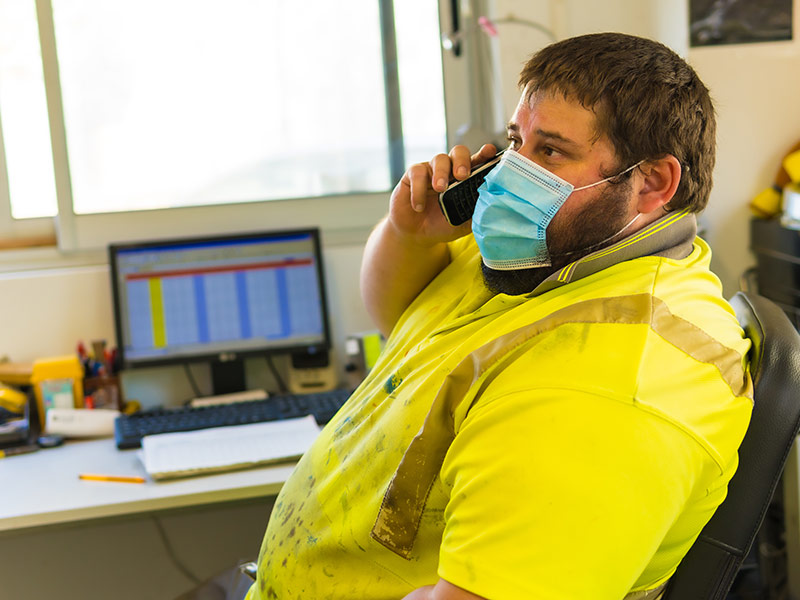Indoor air quality has emerged as a critical workplace safety concern that extends far beyond traditional industrial hygiene considerations. While basic ventilation systems can address some air quality issues, modern workplaces require sophisticated approaches to manage diverse airborne hazards ranging from chemical emissions to biological contaminants. Poor air quality doesn’t just create immediate discomfort—it can lead to serious health problems, reduced productivity, increased absenteeism, and significant legal liability for employers.
The complexity of modern air quality challenges demands comprehensive management strategies that integrate monitoring, source control, ventilation design, and ongoing maintenance. Organizations that treat air quality as a fundamental workplace safety issue rather than a facilities management afterthought create healthier, more productive environments while reducing long-term health risks for their employees.
Understanding Modern Air Quality Threats
Contemporary workplaces face air quality challenges that previous generations of workers never encountered. Office environments contain volatile organic compounds from furniture, carpeting, cleaning products, and electronic equipment. These chemicals can accumulate in tightly sealed buildings designed for energy efficiency, creating what experts call “sick building syndrome”—a constellation of symptoms including headaches, fatigue, and respiratory irritation.
Manufacturing and industrial facilities deal with more obvious but equally complex challenges. Chemical processes release vapors, dusts, and fumes that require careful control to prevent both acute exposures and long-term health effects. Welding operations produce metal fumes and gases, woodworking creates respirable dust particles, and painting processes generate solvent vapors that can overwhelm basic ventilation systems.
Biological contaminants represent an increasingly recognized threat across all workplace types. Mold growth in HVAC systems, bacterial contamination from water damage, and viral transmission through airborne droplets have moved from niche concerns to mainstream workplace safety priorities. The COVID-19 pandemic highlighted how airborne disease transmission can shut down entire operations, making air quality management a business continuity issue as well as a health concern.
Beyond Ventilation: Comprehensive Air Quality Strategies
Effective air quality management begins with source control—eliminating or reducing contaminant generation rather than simply diluting it with outside air. This might involve substituting less toxic chemicals, enclosing processes that generate emissions, or scheduling high-emission activities during periods when fewer workers are present.
Local exhaust ventilation represents a targeted approach that captures contaminants at their source before they can disperse into the general workspace. Unlike general ventilation that affects entire areas, local exhaust systems can provide highly effective control with lower energy costs and minimal impact on worker comfort. Properly designed local exhaust systems can achieve 95% or higher capture efficiency for many industrial processes.
Air cleaning and filtration technologies offer additional protection when source control and ventilation cannot eliminate all airborne hazards. High-efficiency particulate air (HEPA) filters can remove nearly all particles from air streams, while activated carbon systems adsorb chemical vapors and odors. Ultraviolet germicidal irradiation can inactivate biological contaminants, and photocatalytic oxidation can break down certain chemical pollutants.
Monitoring and Assessment Programs
Effective air quality management requires ongoing monitoring to identify problems before they affect worker health. Traditional industrial hygiene monitoring focuses on specific chemicals with established exposure limits, but comprehensive programs also assess comfort parameters, general air quality indicators, and potential emerging contaminants.
Real-time monitoring systems provide immediate feedback about air quality conditions, allowing for rapid response to changing conditions. These systems can track parameters like particulate matter concentrations, volatile organic compound levels, carbon dioxide buildup, and temperature and humidity conditions. When integrated with building management systems, real-time monitors can automatically adjust ventilation rates or trigger alerts when conditions exceed acceptable limits.
Personal exposure monitoring remains essential for workers with potentially significant chemical exposures. Wearable sensors can now provide continuous monitoring of individual exposures, offering insights into how specific work practices, locations, and times affect personal exposure levels. This information enables targeted interventions that protect high-risk workers while avoiding unnecessary restrictions for others.
System Design and Optimization
Effective workplace air quality requires thoughtful system design that considers the specific contaminants present, work patterns, and building characteristics. General ventilation systems should provide adequate outdoor air to maintain acceptable carbon dioxide levels and dilute general contaminants, but they must be supplemented with targeted controls for specific hazards.
Airflow patterns significantly impact contaminant control effectiveness. Poor system design can create dead air zones where contaminants accumulate or short-circuiting where supply air mixes with exhaust air before reaching workers. Computational fluid dynamics modeling can help optimize system design before installation, while smoke testing can verify proper airflow patterns in existing systems.
Energy efficiency considerations must be balanced with air quality needs. While energy-efficient buildings often have excellent temperature control, their tight construction can trap indoor air pollutants. Recovery ventilation systems can provide necessary outdoor air while minimizing energy loss, and variable-speed fans can adjust ventilation rates based on actual occupancy and contamination levels.
Maintenance and Continuous Improvement
Air quality systems require regular maintenance to continue operating effectively. Dirty filters reduce system efficiency and can become sources of biological contamination. Ductwork accumulates dust and debris that can harbor microorganisms or provide fuel for fires. HVAC components like cooling coils and drain pans can support mold growth if not properly maintained.
Preventive maintenance programs should include regular filter replacement, duct cleaning, and inspection of system components. Maintenance schedules should be based on actual system usage and contamination levels rather than arbitrary time intervals. Air quality monitoring can help identify when maintenance is needed and verify that maintenance activities restore proper system operation.
Building a Comprehensive Program
Successful workplace air quality management requires integration across multiple organizational functions. Facilities management handles system operation and maintenance, safety professionals conduct exposure assessments and health risk evaluations, and operations managers balance production needs with air quality requirements.
Training programs should ensure that all stakeholders understand their roles in maintaining good air quality. Employees need to know how to identify air quality problems and report concerns promptly. Maintenance personnel require training on proper procedures that prevent contamination during system service. Supervisors should understand how work practices affect air quality and when to request additional controls.
Regular program evaluation helps identify improvement opportunities and ensures that air quality management keeps pace with changing workplace conditions. This includes reviewing monitoring data for trends, evaluating the effectiveness of control measures, and staying current with new technologies and regulatory requirements.
Workplace air quality management represents a critical investment in employee health and organizational performance. By implementing comprehensive programs that go beyond basic ventilation to address the full spectrum of airborne hazards, organizations can create healthier, more productive work environments while demonstrating genuine commitment to employee welfare.



